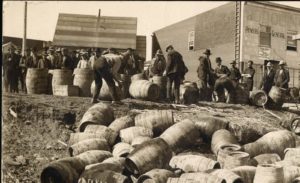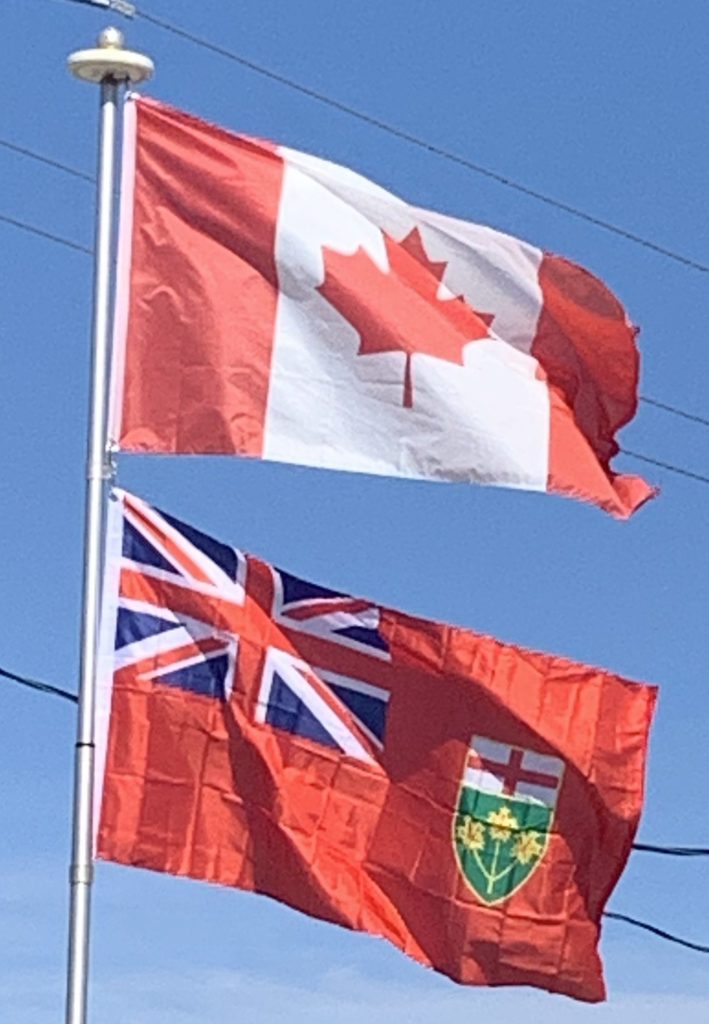In July 1912, the Conservative government of Sir James Whitney issued Regulation 17 which severely limited the availability of French-language schooling to the province’s French-speaking minority. French Canadians reacted with outrage, journalist Henri Bourassa denouncing the “Prussians of Ontario”. The regulation was eventually repealed in 1927.

Influenced by events in the United States, the government of Sir William Hearst introduced prohibition of alcoholic drinks in 1916 with the passing of the Ontario Temperance Act. However, residents could distill and retain their own personal supply, and liquor producers could continue distillation and export for sale, allowing this already sizeable industry to strengthen further. Ontario became a hotbed for the illegal smuggling of liquor and the biggest supplier into the United States, which was under complete prohibition. Prohibition in Ontario came to an end in 1927 with the establishment of the Liquor Control Board of Ontario under the government of Howard Ferguson. The sale and consumption of liquor, wine, and beer are still controlled by some of the most extreme laws in North America to ensure strict community standards and revenue generation from the alcohol retail monopoly are upheld. In April 2007, Ontario Member of Provincial Parliament Kim Craitor suggested local brewers should be able to sell their beer in local corner stores; however, the motion was quickly rejected by Premier Dalton McGuinty.
The post-World War II period was one of exceptional prosperity and growth. Ontario has been the recipients of most immigration to Canada, largely immigrants from war-torn Europe in the 1950s and 1960s and following changes in federal immigration law, a massive influx of non-Europeans since the 1970s. From a largely ethnically British province, Ontario has rapidly become culturally very diverse.
The nationalist movement in Quebec, particularly after the election of the Parti Québécois in 1976, contributed to driving many businesses and English-speaking people out of Quebec to Ontario, and as a result, Toronto surpassed Montreal as the largest city and economic center of Canada. Depressed economic conditions in the Maritime Provinces have also resulted in de-population of those provinces in the 20th century, with heavy migration into Ontario.
Ontario’s official language is English, although there exists a number of French-speaking communities across Ontario. French-language services are made available for communities with a sizeable French-speaking population; a service that is ensured under the French Language Services Act of 1989.
Economy:
Ontario is Canada’s leading manufacturing province, accounting for 52% of the total national manufacturing shipments in 2004. Ontario’s largest trading partner is the American state of Michigan.
Mining and the forest products industry, notably pulp and paper, are vital to the economy of Northern Ontario. As of 2011, roughly 200,000 ha are clear cut each year; herbicides for hardwood suppression are applied to a third of the total. There has been controversy over the Ring of Fire mineral deposit, and whether the province can afford to spend CAD$2.25 billion on a road from the Trans-Canada Highway near Kenora to the deposit, currently valued at CAD$60 billions.
